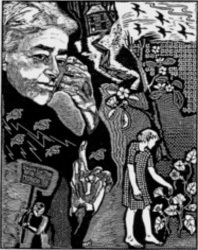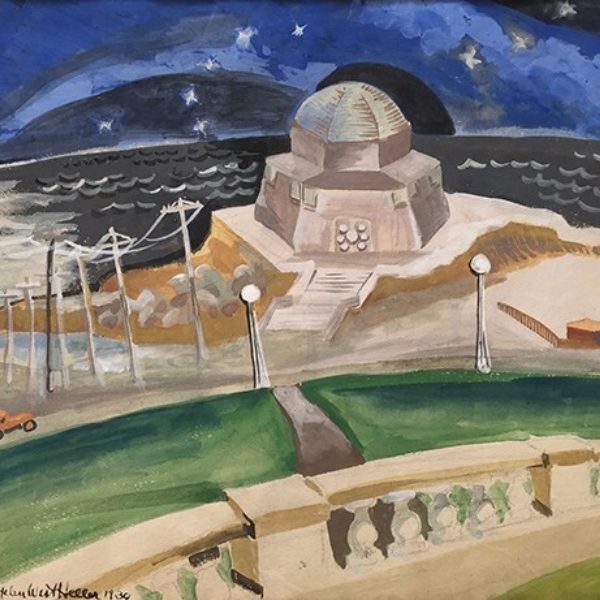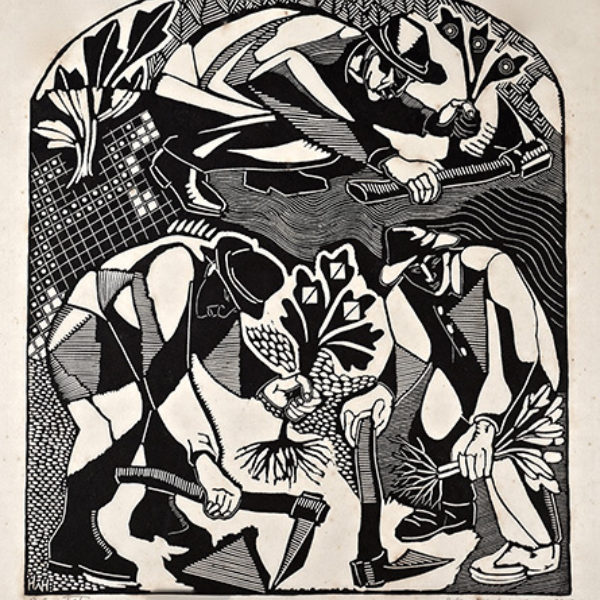
Helen West Heller
b. 1872, Rushville, IL - d. 1955, New York, NY
When she died in a tenement apartment in New York in 1955, artist, poet, and activist Helen West Heller was alone, impoverished, and largely forgotten. The details of her life and career remain somewhat obscure. Most of what we know is derived from a few letters and an incomplete and emotionally exaggerated autobiography found among her papers, as well as from articles written by a confidant after her death.
Born on a farm in western Illinois, Heller married twice, but for the most part lived independently. She was interested in art from an early age, but received little formal training. Her father, a wheelwright and furniture maker as well as a farmer, influenced her interest in art and nature. Heller moved to Chicago first at age 20 in 1892, supporting herself as an artist’s model and through other menial labor. She moved to New York around 1902, taking courses briefly at the Art Students League. Heller married a second time and moved back to a western Illinois farm before World War I. She left the farm again in 1921, arriving in Chicago with fifty paintings in hand—works, she remarked to Chicago Daily News art critic, C. J. Bulliet, which would just as well have been “dropped down an unused well.” Rejected from the Art Institute of Chicago’s Annual American Exhibition of 1921, Heller was a founding member of the Chicago No-Jury Society, which had its first exhibition at the Marshall Field’s department store in 1922. Heller is mentioned along with fellow bohemians, Ben Hecht, Maxwell Bodenheim, and Edna St. Vincent Millay as habitués of the “Towertown” studio of the radical modernist painter, Rudolph Weisenborn in Harvey Warren Zogbaum’s classic 1929 sociological study of Chicago, The Gold Coast and the Slum.
Heller’s poetry, first recognized by Jane Heap, editor of the Little Review, was published in several journals and in the weekly Art Magazine of the Chicago Evening Post, from 1926 to 1928, under the name of “Tanka.” It was in 1923 that Heller—unable to afford more costly art materials—began to concentrate on wood and linoleum block prints, which would become the focus of her career. Beach at Cedar Street, one of her earliest essays in the technique is reminiscent of the primitivizing style of earlier twentieth-century fauvist and expressionist artists, such as Henri Matisse and Ernst Ludwig Kirchner. The image shows a line of elegantly curving trees standing in front of a number of horizontal bands, representing a path with horses and riders, a group of bathers, the lake, and a sky of brilliant sunshine and incident. Heller’s later prints are less improvisational, but have a similar sense of formal energy and reverence for nature. In 1928, Heller published The Migratory Urge, a book in which both word and image were cut from the same block.
Heller moved back to New York in 1932, where she remained until her death in 1955. Regarded as a leading graphic artist, her work was exhibited frequently at such venues as the Brooklyn Museum and the Whitney Museum of American Art. Heller produced paintings, prints, and murals for the WPA while she was in New York in the 1930s, and her woodcuts were often reproduced in the New York Times. While deeply spiritual in her artwork, Heller was also a committed Marxist who attended the First American Artists’ Congress Against War and Fascism in 1936. Leading an Artists Union protest against WPA job layoffs in December 1936, Heller was beaten unconscious by police and arrested with more than 200 of her fellow sit-down strikers.
Daniel Schulman
References
Artists Online: Helen West Heller, http://gis.net/~scatt/heller/heller.html
.Bulliet, C. J. “Artists of Chicago, Past and Present, No. 16: Helen West Heller.” Chicago Daily News, June 8, 1935.
Heller, Helen West. Woodcuts U.S.A. New York: Oxford University Press, 1947.
Harms, Ernest. “Dark to Light: An Appreciation of the Life Work of Helen West Heller, 1872–1955.” American Artist 21, no. 9 (November 1957), 30–34, 67–68.
Harms, Ernst. “Helen West Heller—The Woodcutter.” Print Collector’s Quarterly, 29, no. 2 (April 1942), 251–71.
Artist Image: Seasons (self portrait), 1948 / Helen West Heller. Wood engraving, image size: 8″ [w] x 10.5″ [h]. Based on portrait photograph by Harrison Knox. Created for National Academy of Design. 2012, © collection of Scattergood-Moore.

